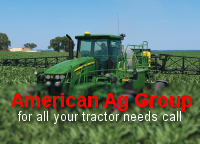 To stop pre- and post-emergence broadleaf and grassy weeds in major crops like corn, sorghum and sugar cane, the Atrazine herbicide is frequently used. The compound is both effective and inexpensive, and is well-suited to production systems with very narrow profit margins, as is often the case with corn. Atrazine is the most widely used herbicide in conservation tillage systems, which are designed to prevent soil erosion.
To stop pre- and post-emergence broadleaf and grassy weeds in major crops like corn, sorghum and sugar cane, the Atrazine herbicide is frequently used. The compound is both effective and inexpensive, and is well-suited to production systems with very narrow profit margins, as is often the case with corn. Atrazine is the most widely used herbicide in conservation tillage systems, which are designed to prevent soil erosion.
Atrazine herbicide is a controversial herbicide that was banned in Europe in 2004 due to its persistent groundwater contamination. This vastly used herbicide gets a lot of bad publicity from concerned people without adequate information. Levels of atrazine in U.S. waters are well within the federal lifetime drinking water standard of 3 parts-per-billion — a level containing a 1,000-fold safety buffer. It’s widely used in the United States, with 76 million pounds applied each year. The regular testing of Atrazine herbicide has seen it pass the most up-to-date safety requirements in the world.
Benefits of using Atrazine include:
~ Protecting Corn Yield
~ Improved Flexibility in Weed Control
~ Economical and Effective Weed Control
~ Less Soil Erosion Through Conservation Tillage
As stated in the U.S. EPA, Cumulative Risk Assessment for Triazine Pesticides, March 2006: “Risk assessments for cumulative exposures to triazine residues via drinking water based on currently registered uses of atrazine and simazine are not of concern.”
 CLICK TO DOWNLOAD
CLICK TO DOWNLOAD


